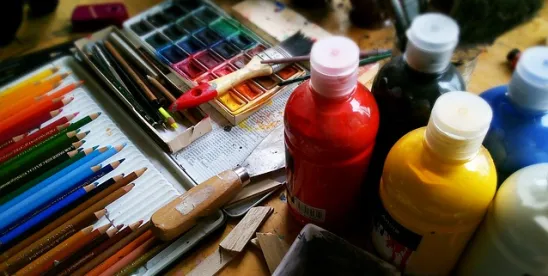The US Court of Appeals for the Second Circuit affirmed that plaintiffs-appellees’ temporary artwork had achieved appropriate stature to be protected by the rarely invoked Visual Artists Rights Act of 1990 (VARA), and that an award of statutory damages was warranted for defendants-appellants’ willful unlawful actions. Jonathan Cohen, et al. v. G&M Realty L.P., et al., Case Nos. 18-498, -538 (2nd Cir. Feb. 20, 2020) (Parker, J).
VARA established a structure of moral rights that gives the author of a work of visual art the right to “prevent any destruction of a work of recognized stature,” and provides that “any intentional or grossly negligent destruction of that work is a violation” of VARA. The act also contains specific language prohibiting the removal or destruction of artwork incorporated into a building absent certain written waivers or notice provisions, which are detailed in the statute.
The present dispute traces its roots back to 2002 when Gerald Wolkoff, in association with his various realty companies, hired Jonathan “Meres One” Cohen, a known muralist and aerosol artist, to turn a series of dilapidated warehouse buildings in Long Island City, New York, into an exhibition space for artists. Under Cohen’s leadership and curation, the site became known as 5Pointz and evolved into a major global center for aerosol art. During those years, 5Pointz displayed more than 10,500 works of temporary and permanent paintings and other works of art, and attracted extensive media coverage and thousands of daily visitors.
In 2013, Cohen learned that Wolkoff intended to destroy 5Pointz to build luxury apartments. Cohen led efforts to raise funds to buy the buildings, to designate the site as one of cultural significance, and to obtain a preliminary injunction after filing a lawsuit under VARA. All these efforts were unsuccessful. While waiting for the court’s written opinion on the denial of the injunction, Wolkoff destroyed and whitewashed the works at 5Pointz. Following the destruction of the art, nine additional artists sued Wolkoff. The suits were consolidated to consider whether the 5Pointz artwork had achieved recognized stature under VARA and, if so, the value of the art destroyed by Wolkoff.
The district court found that 45 of the works at issue had achieved recognized stature, that Wolkoff violated VARA by destroying those works, and that the violation was willful. In support of its decision, the district court highlighted evidence regarding Cohen’s stature in the world of aerosol art, Cohen’s deliberate curation of the artists that exhibited at 5Pointz, and expert testimony as to the stature of the destroyed works. Given the challenges in calculating the market value of the art works, however, the district court declined to award actual damages and instead awarded the maximum $6.75 million in statutory damages, which it deemed appropriate to sanction Wolkoff’s willful conduct and to uphold the VARA policies. Wolkoff appealed.
At the Second Circuit, the debate again centered on the “recognized stature” of the 5Pointz works to qualify for protection from destruction under VARA. The Court articulated its test for a work of recognized stature as “one of high quality, status, or caliber that has been acknowledged as such by a relevant community.” For the case at hand, the Court found the applicable test is whether the work was of “artistic quality” as determined by “the artistic community.”
The Second Circuit began its analysis by rejecting Wolkoff’s contention that temporary works cannot meet the recognized stature requirement, noting that nothing in VARA requires such a conclusion. The Court cited works by famous street artist Banksy and the 2005 “The Gates” installation in New York’s Central Park as evidence of temporary works with “stature.” The Court also rejected Wolkoff’s arguments challenging the district court’s assessment of the stature and quality of the 5Pointz works, and found that the district court’s reliance on the cited expert testimony and Cohen’s curation of the works was not in error.
Turning to damages, the Second Circuit found no clear error in the district court’s assessment of Wolkoff’s willfulness, which resulted in the award of statutory damages to the plaintiffs. The Court highlighted the fact that Wolkoff admitted he knew the artists were pressing VARA claims when he ordered the destruction of 5Pointz. He also admitted that he was advised by counsel of the 90-day notice provisions required under VARA, and decided to proceed with the whitewash rather than waiting out the notice period. Finally, the Court affirmed that the amount of the damages award—the statutory maximum—was warranted to serve as a deterrent effect in the face of Wolkoff’s remorselessness after he testified that he “would make the same decision today.” The Court therefore affirmed both the VARA violation and the $6.75 million in damages awarded to the 5Pointz artists.
Practice Note: The defendant, Jerry Wolkoff, has now petitioned the Second Circuit for stay, indicating he will file a petition for certiorari on the basis that the fine imposed was “grossly excessive” (and therefore unconstitutional) and argued that the Supreme Court may want to consider the meaning of the term art of “recognized stature” as used in the VARA.




 />i
/>i
